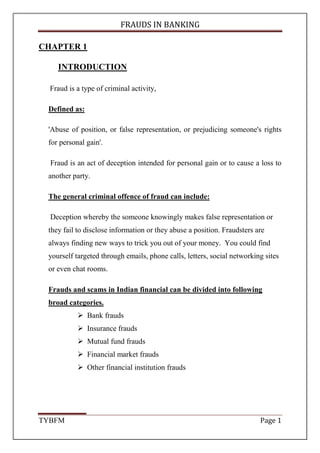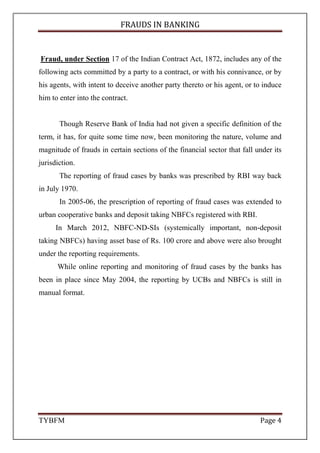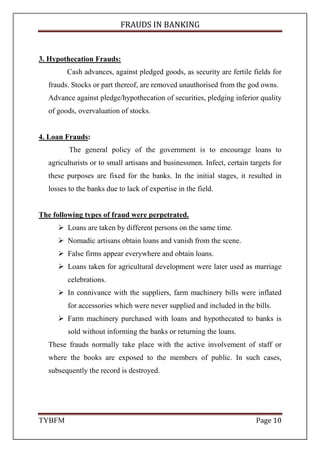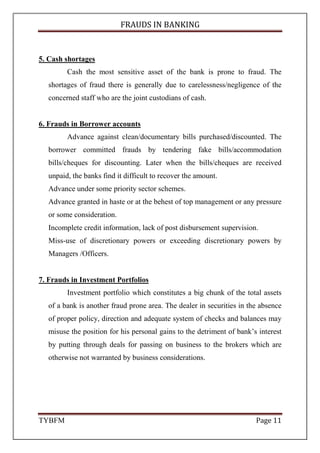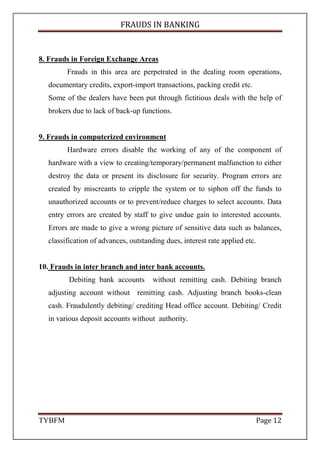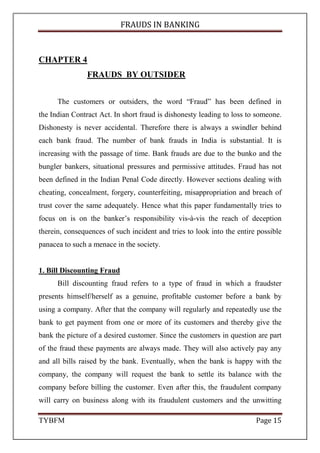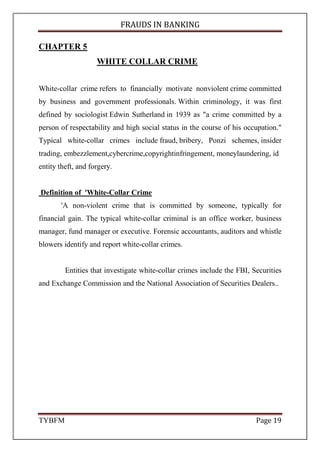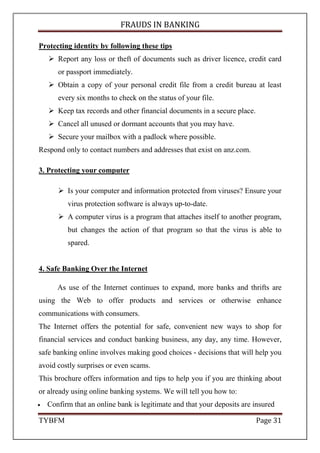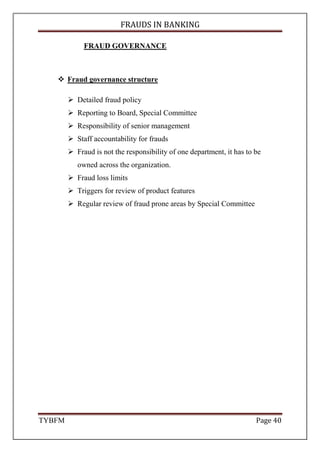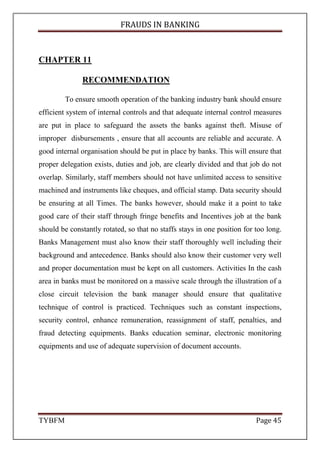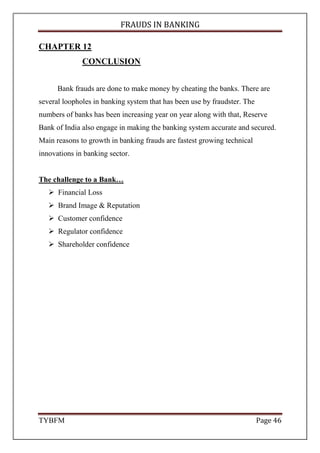Fraud in banking can take several forms and be perpetrated by both insiders and outsiders. The document defines bank fraud and discusses the Reserve Bank of India's role in monitoring fraud cases in the banking sector. It also outlines some common types of fraud committed by insiders, such as deposit account frauds, purchased bill frauds, and loan frauds. Fraud by outsiders is also discussed, including bill discounting fraud, forgery of altered checks, and accounting fraud. The causes of banking fraud are described as well as the banker's responsibility to protect against deception and loss.
